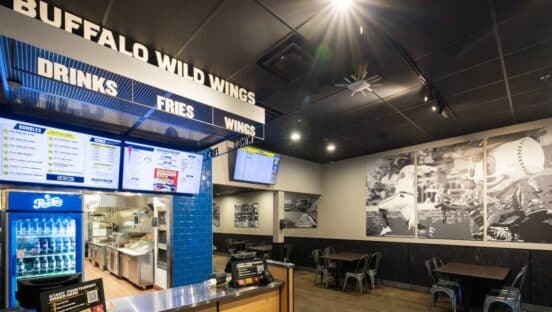Every restaurant company wants to grow. If you aren’t growing, you’re vanishing. To grow means that you are increasing same-store sales, increasing EBIDTA, or opening new locations. Growing your organization by opening new locations needs to be done strategically, especially from a supply chain point-of-view. It’s theoretically easy to open up a new location in Denver, but if your nearest point of distribution is in Chicago, how are you going to get the proprietary items that define your brand to Denver?
Much like ample freezer space often isn’t considered in the design of a restaurant, distribution is also a frequent afterthought for expansion into new markets. But it is critical for early purchasing and supply chain discussions with the executive and development teams when it comes to plans for expansion.
Many restaurant chains have a relatively high number of proprietary stock keeping units (SKUs) due to the nature of their product offerings. Proprietary items are the products that define a brand and differentiate them from their competition. So how do you continue to grow, add locations, and still have every unique product that defines your brand at every location? Great question.
Moving into a new territory (economically) suggests use of a Broadline Distributor until sufficient scale is achieved to warrant an independent Systems Distributor. A Systems Distributor stocks items determined by the customer; requires sufficient restaurants to optimize in-bound freight; and has distributor requirements for manageable case costs, including a minimum of $20 million in sales, approximately 100-plus cases per drop, a low SKU count, and open delivery windows.
With a Broadline Distributor, the customer purchases from items stocked by the Broadliner; the Broadliner allows improved economics for single or limited unit concepts (does not allow chain to leverage purchasing power); and there is a tight distribution area to improve economics.
Given most restaurant chains' business model, they are heavily dependent on exclusive SKUs; therefore, a single restaurant could not provide sufficient volume to support a separate Distribution Center. As restaurants are located further from existing Distribution Centers, the costs of distribution will increase.
In order to stock a proprietary SKU, most Broadline Distributors require minimum volumes of five cases per week and a minimum restaurant order size of 150 cases per week. This would likely require volume from three to five restaurants, depending on volume by location. Chances are that proprietary SKUs would need to be minimized due to the volume requirements for every product.
So what happens if you try to bend the rules and don’t have the exact same products in every location? Challenges and risks associated with making changes to the proprietary and “brand” items include nutritional discrepancies, higher costs, lost rebates, and increased supply chain complexity.
Ultimately, you need to know the preparations for future expansion into new or remote markets. This includes the following: awareness that new restaurants in remote markets may experience temporary or permanently lower margins than restaurants in areas with greater penetration; a development strategy focused on market or delivery zone efficiencies; and a cross functional team to determine the best way to service restaurants less than 250 miles from existing delivery zones.
Something you should have in the site development plans is the delivery requirement for any location. Basic delivery requirements that should be considered include: an accurate construction calendar provided to the distributor with as much lead time as possible (before construction starts); clear two wheel cart access; storage area within 100 feet of the delivery point; identification of any special security requirements; identification of any city ordinances or landlord restrictions that may restrict delivery times; and the ability to receive a truck that your distributor can accommodate. Items that can impact ability include city restrictions, dock height, narrow street widths, and existence of stairs.
Moving into new territories beyond a chain distributor’s normal geography requires a plan and a full understanding of the options and costs associated with the pain of growth. So think in terms of risk versus reward and always measure twice.












